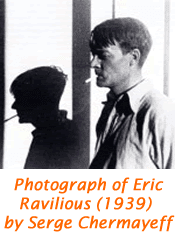Those Essex radicals made an appearance in the Guardian the day after I wrote my last blog, in a piece on Eric Ravilious. The article quotes from Ravilious’s letters, and in particular how he tells of going to hear “communist sermons” in Thaxted – clearly a reference to Conrad Noel, though the Red Vicar himself goes unmentioned in the article. The point being made was that Ravilious was a self-declared socialist, but at the same time was never really that engaged, or at least never let politics cloud his sunny, optimistic approach to life and art.
The article accompanies a great exhibition at the Fry Gallery in Saffron Walden which I visited yesterday. The show brings together 18 landscapes that Ravilious produced of scenes in North West Essex, where he lived from 1930. The accompanying text points out that Ravilious was perhaps more inspired by the ancient landscapes of Sussex and Wiltshire, but that there was plenty of quotidian interest to occupy him in Essex – views from attic windows, scenes of farms and fields, and interiors such as The Attic Bedroom (which is part of the Fry Gallery’s permanent collection). I liked Observers’ Post, a scene from 1939 showing war preparations on the home front. I had not realised before yesterday that Ravilious was the first official War Artist to be killed in action in 1942, while on a search-and-rescue mission, at the age of 39.



Hope you can make it to the talk, Ben - come and say hello if you do. Cheers, James
ReplyDelete